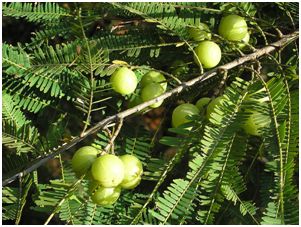
Botanical Name – Phyllanthus emblica L.
Common Name - Indian gooseberry
Classification:-
Kingdom - Plantae
Division - Spermatophyta
Class - Diocotyledonae
Order - Malpighiales
Family - Euphorbiaceae
Genus - Phyllanthus
Species - Emblica
Characteristics Of Euphorbiaceae Family-
Euphorbiaceae, also known as the spurge family, is a diverse family of flowering plants. They are commonly referred to as euphorbias. They are found as herbs, shrubs, trees and even succulents. They grow either annually or perennially.
Around 218 genera and 6745 species of the families are known. Many members are important food sources, others can be used for their oil and waxes and extraction of medicinal drugs. Some of them are dangerous as well because of their poisonous fruits, leaves and sap.
Habitat:- Deciduous tree up to 20 m tall.
Distribution:- India, Nepal, Burma, China (South), Malesia to Australia (North), Thailand, Indochina, Laos (Khammouan).
Status:- Least concern
Plant distribution:- The tree is small to medium in size, reaching 1–8 m (3 ft 3 in–26 ft 3 in) in height.The branchlets aren't glabrous or finely pubescent, 10–20 cm (3.9–7.9 in) long, usually deciduous.
Leaves are simple, subsessile and closely set along branchlets, light green, resembling pinnate leaves.
The fruit is nearly spherical, light greenish yellow, quite smooth and hard on appearance, with six vertical stripes or furrows. The flowers are greenish-yellow.
USES-
The plant is used both as a medicine and as a tonic to build up lost vitality and vigor.
Phyllanthus emblica is highly nutritious and could be an important dietary source of vitamin C, amino acids, and minerals.
Various plant parts use antidiabetic, hypolipidemic, antibacterial, antioxidant, antiulcerogenic, hepatoprotective, gastroprotective, and chemopreventive properties.
All parts of the plant are used for medicinal purposes, especially the fruit, which has been used in Ayurveda as a potent rasayana and in traditional medicine for the treatment of diarrhea, jaundice, and inflammation.